Friday’s Tree Frog interview with political risk expert Robert McKellar drew exceptional interest—and for good reason. Given reader response and the ongoing fallout from Trump’s trade policies, we’re featuring it again for those who missed it. McKellar, who divides his time between Turkey and Canada, brings an international perspective to his analysis of Trump’s second-term trade environment and its implications for Canada’s forest sector. His message is clear: US protectionism is not a passing phase. The current tariff and duty structure reflects a broader nationalist realignment that will persist well beyond the Trump presidency. He notes it is unlikely that the upcoming USMCA review will restore pre-Trump-2 market access, and that while Washington is betting tariffs will attract new foreign investment, the result has instead been greater political risk.
McKellar also examines the recent US–China flare-up, concluding it is unlikely to reignite a full-scale trade war. Within the US, he observes that political momentum currently favours the US Lumber Coalition over homebuilders, but that balance could shift if housing affordability again becomes a political flashpoint. Should the housing crisis deepen, Trump has shown he’s willing to adjust course when broader political pressures outweigh protectionist instincts. For Canadian producers, diversification and value-added strategies remain essential—but slow to materialize. That reality underpins McKellar’s central question: “If that’s true—then what?” His answer calls for a fundamental shift in mindset—challenging the sector to rethink its future and chart a course less dependent on the US market. He concludes that companies should view political-risk awareness as a practical framework—linking foresight, market intelligence, and decision-making into a continuous process of adaptation. The tools already exist within most organizations, he says; the opportunity lies in using them more deliberately as part of everyday business planning.



 A U.S.-Canada trade deal on steel, aluminium and energy could be ready for Prime Minister Mark Carney and US President Donald Trump to sign at the Asia-Pacific Economic Cooperation summit later this month in South Korea, the
A U.S.-Canada trade deal on steel, aluminium and energy could be ready for Prime Minister Mark Carney and US President Donald Trump to sign at the Asia-Pacific Economic Cooperation summit later this month in South Korea, the 


 BURNABY, BC — Interfor announced today revised operating plans for the fourth quarter of 2025. Due to persistently weak market conditions and ongoing economic uncertainty, Interfor will further temporarily reduce lumber production across its operations in British Columbia, Ontario, the US Pacific Northwest and the US South. These curtailments are expected to reduce lumber production in the fourth quarter of 2025 by approximately 250 million board feet, or 26%, as compared to the second quarter of 2025, which reflected a more normal operating stance. The curtailment volumes are approximately evenly split between Interfor’s Canadian and U.S. operations. …These curtailments are an amendment to Interfor’s previously announced curtailments on September 4, 2025. “Lumber prices in all regions of North America have continued to weaken, from already unsustainably low levels,” said Ian Fillinger, Interfor’s CEO. …While necessary, we fully recognize the impact these actions will have on our employees, contractors, suppliers and communities.”
BURNABY, BC — Interfor announced today revised operating plans for the fourth quarter of 2025. Due to persistently weak market conditions and ongoing economic uncertainty, Interfor will further temporarily reduce lumber production across its operations in British Columbia, Ontario, the US Pacific Northwest and the US South. These curtailments are expected to reduce lumber production in the fourth quarter of 2025 by approximately 250 million board feet, or 26%, as compared to the second quarter of 2025, which reflected a more normal operating stance. The curtailment volumes are approximately evenly split between Interfor’s Canadian and U.S. operations. …These curtailments are an amendment to Interfor’s previously announced curtailments on September 4, 2025. “Lumber prices in all regions of North America have continued to weaken, from already unsustainably low levels,” said Ian Fillinger, Interfor’s CEO. …While necessary, we fully recognize the impact these actions will have on our employees, contractors, suppliers and communities.”
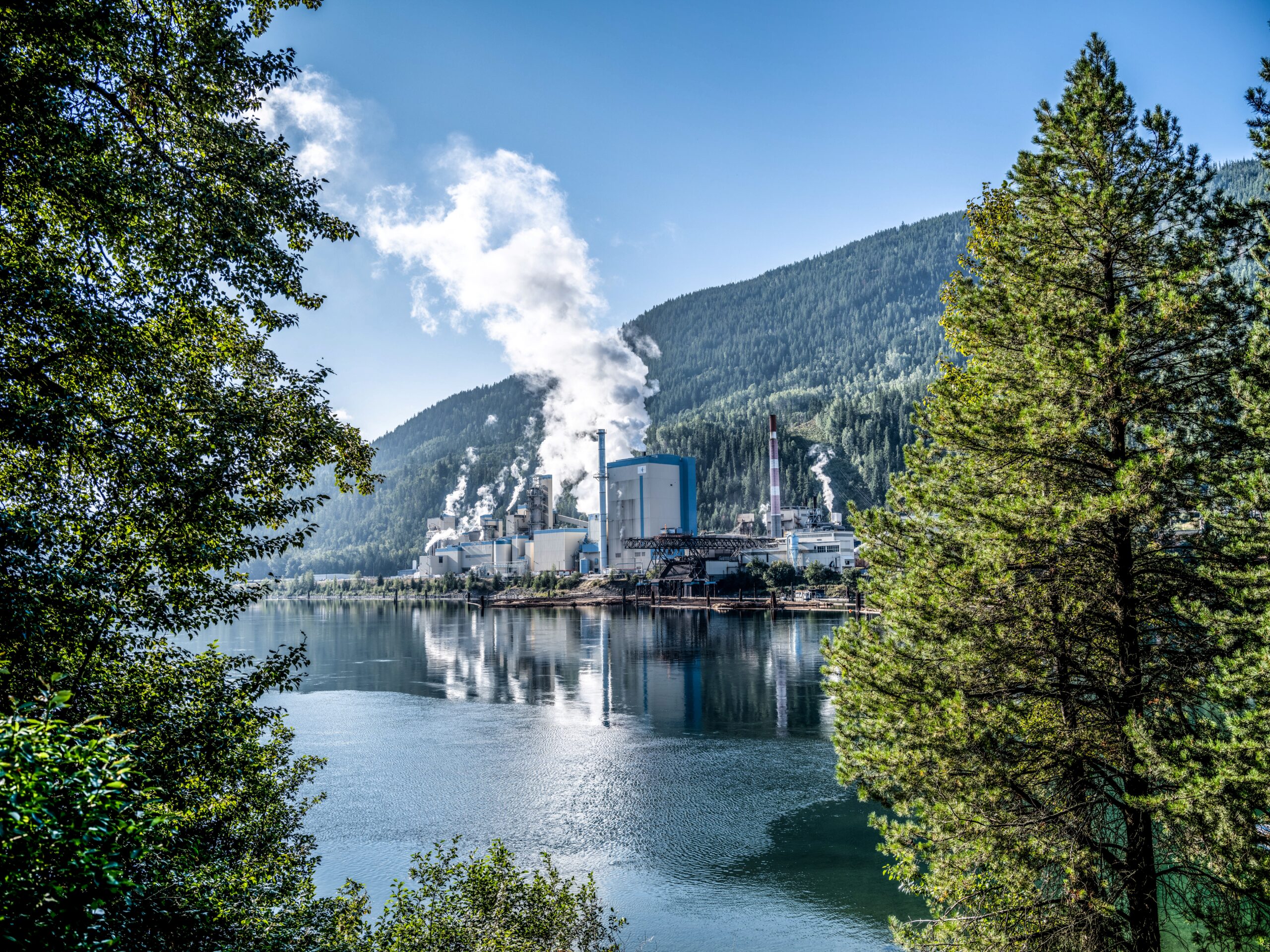




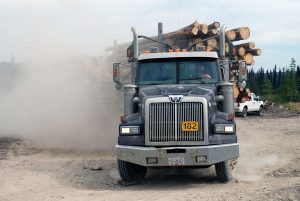 Linda Bell says there has been turmoil and chaos along parts of the US and New Brunswick border as trucks carrying lumber navigate the new tariffs that came into effect on Tuesday. But Bell says there’s been confusion as to what’s included under the new tariffs. In her almost three decades working as the general manager of the Carleton Victoria Wood Producers Association in Florenceville, she says it’s the first time there appears to be a duty on roundwood. “Trucks that were headed over there have been turned back and had to be unloaded. Some have been allowed to cross. We really don’t know what is going on,” she said. She said a few large mills in Maine who’ve been buying New Brunswick wood for five decades have halted all deliveries until the confusion can be cleared up. …Minister Mélanie Joly said there are different interpretations happening at various border locations.
Linda Bell says there has been turmoil and chaos along parts of the US and New Brunswick border as trucks carrying lumber navigate the new tariffs that came into effect on Tuesday. But Bell says there’s been confusion as to what’s included under the new tariffs. In her almost three decades working as the general manager of the Carleton Victoria Wood Producers Association in Florenceville, she says it’s the first time there appears to be a duty on roundwood. “Trucks that were headed over there have been turned back and had to be unloaded. Some have been allowed to cross. We really don’t know what is going on,” she said. She said a few large mills in Maine who’ve been buying New Brunswick wood for five decades have halted all deliveries until the confusion can be cleared up. …Minister Mélanie Joly said there are different interpretations happening at various border locations.
 NEW YORK — Cabinet dealers, interior designers and remodeling contractors in the U.S. hope new tariffs on imported kitchen cabinets, bathroom vanities and upholstered wooden furniture will boost domestic production of those products. But several small business owners in the home improvement industry say they expect some short-term pains from the import taxes. Potential customers may postpone kitchen and bathroom renovations until costs — and the economy — seem more stable. …The American Kitchen Cabinet Alliance lobbied for tariffs to help offset what they described as a flood of cheap cabinets from countries such as Vietnam, Malaysia, China and elsewhere in the decades since manufacturing moved offshore. …Although the White House said the tariffs were intended to boost domestic production and protect U.S. businesses from predatory trade practices, some cabinet makers say that will be difficult because their supply chains are multinational.
NEW YORK — Cabinet dealers, interior designers and remodeling contractors in the U.S. hope new tariffs on imported kitchen cabinets, bathroom vanities and upholstered wooden furniture will boost domestic production of those products. But several small business owners in the home improvement industry say they expect some short-term pains from the import taxes. Potential customers may postpone kitchen and bathroom renovations until costs — and the economy — seem more stable. …The American Kitchen Cabinet Alliance lobbied for tariffs to help offset what they described as a flood of cheap cabinets from countries such as Vietnam, Malaysia, China and elsewhere in the decades since manufacturing moved offshore. …Although the White House said the tariffs were intended to boost domestic production and protect U.S. businesses from predatory trade practices, some cabinet makers say that will be difficult because their supply chains are multinational.

 The Mississippi Department of Environmental Quality permit board on Wednesday reversed a decision from earlier this year and granted wood pellet manufacturer Drax a permit that allows it to release more emissions from a facility in Gloster. The board held a two-day evidentiary hearing after denying the company the permit in April. The permit falls under Title V of the Clean Air Act and allows Drax’s facility Amite BioEnergy, to become a “major source” of Hazardous Air Pollutants, or HAPs. The board voted unanimously in favor of granting the permit said Kim Turner. Evidence from the hearing “sufficiently addressed” concerns the board previously had. MDEQ has found the facility in violation multiple times since Drax opened the Amite County plant in 2016. …Drax applied for the permit in order to better reflect its production capacity. Since violating the current permit, Amite BioEnergy has had to decrease its pellet output.
The Mississippi Department of Environmental Quality permit board on Wednesday reversed a decision from earlier this year and granted wood pellet manufacturer Drax a permit that allows it to release more emissions from a facility in Gloster. The board held a two-day evidentiary hearing after denying the company the permit in April. The permit falls under Title V of the Clean Air Act and allows Drax’s facility Amite BioEnergy, to become a “major source” of Hazardous Air Pollutants, or HAPs. The board voted unanimously in favor of granting the permit said Kim Turner. Evidence from the hearing “sufficiently addressed” concerns the board previously had. MDEQ has found the facility in violation multiple times since Drax opened the Amite County plant in 2016. …Drax applied for the permit in order to better reflect its production capacity. Since violating the current permit, Amite BioEnergy has had to decrease its pellet output.
 Ikea is increasing the amount of products it makes in the US as the world’s largest home furnishings retailer comes under pressure from US President Donald Trump’s tariffs on furniture and kitchen cabinets. The flat-pack retailer, which made revenues of $5.5bn in the US last year, currently produces only about 15% of products that it sells in the US domestically. That compares with 75% local production in Europe and 80% in Asia. “We want to continue to expand in the US and Canada — how do we optimise a good supply set-up where we secure the right access to materials, to components, to production? That’s very long-term work that we’re doing,” Jon Abrahamsson Ring, chief executive of Inter Ikea. Trump imposed tariffs of between 10% and 50% on imports of foreign furniture and wood products. Ikea, which is responsible for about 1% of total industrial production, is set to take a significant hit.
Ikea is increasing the amount of products it makes in the US as the world’s largest home furnishings retailer comes under pressure from US President Donald Trump’s tariffs on furniture and kitchen cabinets. The flat-pack retailer, which made revenues of $5.5bn in the US last year, currently produces only about 15% of products that it sells in the US domestically. That compares with 75% local production in Europe and 80% in Asia. “We want to continue to expand in the US and Canada — how do we optimise a good supply set-up where we secure the right access to materials, to components, to production? That’s very long-term work that we’re doing,” Jon Abrahamsson Ring, chief executive of Inter Ikea. Trump imposed tariffs of between 10% and 50% on imports of foreign furniture and wood products. Ikea, which is responsible for about 1% of total industrial production, is set to take a significant hit. 


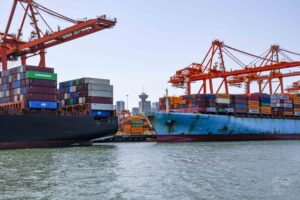 With new tariffs taking effect on furniture and lumber, an analysis released by Goldman Sachs finds American consumers are paying for more than half of the cost of the levies imposed by President Donald Trump. In a research note to its clients, the global investment and banking giant said U.S. consumers will absorb 55% of tariff costs by the end of this year. American businesses would pay 22% of the costs, foreign exporters would absorb 18% and 5% would be evaded, according to the Goldman Sachs analysis. Consumers could end up paying 70% of the cost by the end of next year, the report said. “At the moment, however, US businesses are likely bearing a larger share of the costs because some tariffs have just gone into effect and it takes time to raise prices on consumers and negotiate lower import prices with foreign suppliers,” the analysis adds.
With new tariffs taking effect on furniture and lumber, an analysis released by Goldman Sachs finds American consumers are paying for more than half of the cost of the levies imposed by President Donald Trump. In a research note to its clients, the global investment and banking giant said U.S. consumers will absorb 55% of tariff costs by the end of this year. American businesses would pay 22% of the costs, foreign exporters would absorb 18% and 5% would be evaded, according to the Goldman Sachs analysis. Consumers could end up paying 70% of the cost by the end of next year, the report said. “At the moment, however, US businesses are likely bearing a larger share of the costs because some tariffs have just gone into effect and it takes time to raise prices on consumers and negotiate lower import prices with foreign suppliers,” the analysis adds. 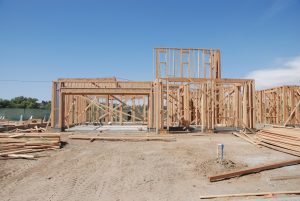 Anthony Cabrera, who started working with a contractor in March to construct the three-bedroom house, was eager to get ahead of a fresh round of tariffs on key building materials and home items that took effect earlier this week. Mr Cabrera had already seen his initial budget of roughly $300,000 balloon to $450,000 as prices for a range of products. …A recent report from Goldman Sachs found that US consumers will shoulder as much as 55% of the cost. It takes time to raise prices on consumers, the economists noted, and US firms will increasingly pass on costs in the coming months. The new tariffs “will create additional headwinds for an already challenged housing market” Buddy Hughes, chairman for the NAHB, said. Affordable housing construction could be hit particularly hard, said Elena Patel, of the Urban-Brookings Tax Policy Center. …Matthew Walsh, at Moody’s Analytics, said that cost uncertainty will be the most immediate effect.
Anthony Cabrera, who started working with a contractor in March to construct the three-bedroom house, was eager to get ahead of a fresh round of tariffs on key building materials and home items that took effect earlier this week. Mr Cabrera had already seen his initial budget of roughly $300,000 balloon to $450,000 as prices for a range of products. …A recent report from Goldman Sachs found that US consumers will shoulder as much as 55% of the cost. It takes time to raise prices on consumers, the economists noted, and US firms will increasingly pass on costs in the coming months. The new tariffs “will create additional headwinds for an already challenged housing market” Buddy Hughes, chairman for the NAHB, said. Affordable housing construction could be hit particularly hard, said Elena Patel, of the Urban-Brookings Tax Policy Center. …Matthew Walsh, at Moody’s Analytics, said that cost uncertainty will be the most immediate effect. As National Forest Products Week is observed each October, the US Endowment for Forestry and Communities is highlighting one of its partner programs that supports and advances US-based manufacturing. The Endowment is administering $5 million of the USDA Forest Service’s $80 million Wood Innovation Grants program, overseeing 18 individual projects across the country. Each project includes matching funds from subaward recipients, resulting in a total impact of approximately $10 million. Together, these investments will advance wood product manufacturing, strengthen forest management and foster energy innovation for timber-producing communities. …“Our forests are only as strong as the markets that sustain them. Through programs like the Wood Innovation Grants, we’re creating new opportunities for innovation while reinforcing the resilience of both ecosystems and the communities that depend on them. Strengthening U.S. wood products manufacturing is necessary to achieve these goals.”
As National Forest Products Week is observed each October, the US Endowment for Forestry and Communities is highlighting one of its partner programs that supports and advances US-based manufacturing. The Endowment is administering $5 million of the USDA Forest Service’s $80 million Wood Innovation Grants program, overseeing 18 individual projects across the country. Each project includes matching funds from subaward recipients, resulting in a total impact of approximately $10 million. Together, these investments will advance wood product manufacturing, strengthen forest management and foster energy innovation for timber-producing communities. …“Our forests are only as strong as the markets that sustain them. Through programs like the Wood Innovation Grants, we’re creating new opportunities for innovation while reinforcing the resilience of both ecosystems and the communities that depend on them. Strengthening U.S. wood products manufacturing is necessary to achieve these goals.” Mass timber is gaining momentum as a structural material that, along with many other attributes, can reduce the embodied carbon in new buildings and retrofits. Despite this potential, and widespread enthusiasm in the design community, the uptake of mass timber has been relatively slow. Architecture 2030 and Pilot Projects Collaborative’s new report,
Mass timber is gaining momentum as a structural material that, along with many other attributes, can reduce the embodied carbon in new buildings and retrofits. Despite this potential, and widespread enthusiasm in the design community, the uptake of mass timber has been relatively slow. Architecture 2030 and Pilot Projects Collaborative’s new report,  More companies that provide rayon, lyocell and modal to fashion brands are sourcing less from ancient and endangered forests, according to the nonprofit Canopy. Although the vast majority of cellulosic fibers are still spun from virgin materials, some of the biggest producers have been quickly adopting forest-friendly and circular materials. 70% of companies making semi-synthetic, cellulose-based fibers now exhibit green practices that reduce pressures on forests. 54% of fiber producers that the group tracked have reached the nonprofit’s favorable green rating. …Canopy uses this annual report in part to help brands make informed sourcing decisions. The use of recycled materials for such fibers is still rare, although it grew to 1.1% in 2024. Such textiles represent only 6% of the global fiber market, according to Textile Exchange. It found that fibers approved by Forest Stewardship Council (FSC) or other certification made up as much as 70 percent of cellulosic fiber market share.
More companies that provide rayon, lyocell and modal to fashion brands are sourcing less from ancient and endangered forests, according to the nonprofit Canopy. Although the vast majority of cellulosic fibers are still spun from virgin materials, some of the biggest producers have been quickly adopting forest-friendly and circular materials. 70% of companies making semi-synthetic, cellulose-based fibers now exhibit green practices that reduce pressures on forests. 54% of fiber producers that the group tracked have reached the nonprofit’s favorable green rating. …Canopy uses this annual report in part to help brands make informed sourcing decisions. The use of recycled materials for such fibers is still rare, although it grew to 1.1% in 2024. Such textiles represent only 6% of the global fiber market, according to Textile Exchange. It found that fibers approved by Forest Stewardship Council (FSC) or other certification made up as much as 70 percent of cellulosic fiber market share.
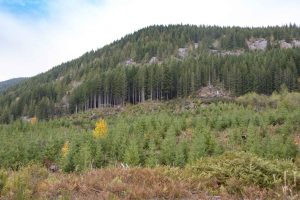 Canada’s vast forests are the envy of much of the world, but they’ve seen brighter days. Our changing climate has beckoned wilder wildfires, disease and drought. And after decades of cutting big and fast to maximize profits, the country’s logging industry is in freefall. But there’s opportunity in crisis — or that’s the bet some First Nations in British Columbia are making. …“Now we’re dealing with a lot of scrub in that corner that we didn’t get to before,” Garry Merkel, a professional forester and a member of the Tahltan Nation. …In Manitoba, the forestry industry watched this summer as profits went up in smoke. Devastating fires burned more forest in logging areas than any year in recorded wildfire history, according to an analysis by Manitoba reporter Julia-Simone Rutgers. And forestry companies are “scared to death,” said.
Canada’s vast forests are the envy of much of the world, but they’ve seen brighter days. Our changing climate has beckoned wilder wildfires, disease and drought. And after decades of cutting big and fast to maximize profits, the country’s logging industry is in freefall. But there’s opportunity in crisis — or that’s the bet some First Nations in British Columbia are making. …“Now we’re dealing with a lot of scrub in that corner that we didn’t get to before,” Garry Merkel, a professional forester and a member of the Tahltan Nation. …In Manitoba, the forestry industry watched this summer as profits went up in smoke. Devastating fires burned more forest in logging areas than any year in recorded wildfire history, according to an analysis by Manitoba reporter Julia-Simone Rutgers. And forestry companies are “scared to death,” said.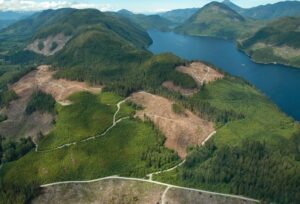 BC’s forest communities are on life support. Families are losing jobs, mills are shuttering, and entire towns are being hollowed out. And now, with another punishing softwood lumber tariff slapped on by the U.S., the bleeding has gone from slow to catastrophic. Premier David Eby calls it an “existential crisis” and wants the prime minister to declare a national emergency. Here’s a better idea: How about the premier stops being the emergency? For eight years, the B.C. NDP has dismantled the foundation of our forest industry. They have made it harder to cut, harder to haul, harder to process, and harder to survive. Now Eby is running to Ottawa and blaming the Americans while ignoring the damage his government has already done. Let’s be clear. The forest industry is not collapsing because of one more tariff. It is collapsing because this government has gutted it from the inside.
BC’s forest communities are on life support. Families are losing jobs, mills are shuttering, and entire towns are being hollowed out. And now, with another punishing softwood lumber tariff slapped on by the U.S., the bleeding has gone from slow to catastrophic. Premier David Eby calls it an “existential crisis” and wants the prime minister to declare a national emergency. Here’s a better idea: How about the premier stops being the emergency? For eight years, the B.C. NDP has dismantled the foundation of our forest industry. They have made it harder to cut, harder to haul, harder to process, and harder to survive. Now Eby is running to Ottawa and blaming the Americans while ignoring the damage his government has already done. Let’s be clear. The forest industry is not collapsing because of one more tariff. It is collapsing because this government has gutted it from the inside.  The Saskatchewan NDP’s critic for forestry is calling on the province to provide support to help forests in the north recover from this summer’s destructive wildfire season. Cumberland MLA Jordan McPhail said more than 2.9 million hectares of forest was destroyed by fire over the summer, and this is having an impact on the forestry sector. “They’re literally seeing future profits go up in smoke,” he said. The northern Saskatchewan MLA said the provincial government can play a positive role by investing in reforestation work. McPhail said provincial regulations dictate that forestry companies replant two trees for every single tree they take. These dictates do not apply in instances where trees are destroyed by fires. …The Government of Saskatchewan said the province is committed to doubling growth in the forestry sector and is prepared to support the industry to do this.
The Saskatchewan NDP’s critic for forestry is calling on the province to provide support to help forests in the north recover from this summer’s destructive wildfire season. Cumberland MLA Jordan McPhail said more than 2.9 million hectares of forest was destroyed by fire over the summer, and this is having an impact on the forestry sector. “They’re literally seeing future profits go up in smoke,” he said. The northern Saskatchewan MLA said the provincial government can play a positive role by investing in reforestation work. McPhail said provincial regulations dictate that forestry companies replant two trees for every single tree they take. These dictates do not apply in instances where trees are destroyed by fires. …The Government of Saskatchewan said the province is committed to doubling growth in the forestry sector and is prepared to support the industry to do this.
 SWEDEN — Ingka Investments, the investment arm of Ingka Group (the largest IKEA retailer), has agreed to acquire approximately 153,000 hectares of land in Latvia and Estonia, of which 89% are forestland, from Södra, Sweden’s largest forest owners’ association. Completion is subject to approval by the relevant regulatory authorities. “Our unique ownership structure allows us to invest with a long-term perspective rather than short-term quarterly thinking.” …As the world’s largest IKEA retailer, Ingka Group operates in 31 markets and represents 87% of global IKEA sales. …Niks Sauva, Country Manager, Ingka Investments Latvia, continued: “We’re committed to creating more value locally in the Baltics. Our goal is to increase the share of wood processed regionally to strengthen the Baltic forestry value chain.” …Completion is subject to approval by the relevant authorities in Latvia and Estonia.
SWEDEN — Ingka Investments, the investment arm of Ingka Group (the largest IKEA retailer), has agreed to acquire approximately 153,000 hectares of land in Latvia and Estonia, of which 89% are forestland, from Södra, Sweden’s largest forest owners’ association. Completion is subject to approval by the relevant regulatory authorities. “Our unique ownership structure allows us to invest with a long-term perspective rather than short-term quarterly thinking.” …As the world’s largest IKEA retailer, Ingka Group operates in 31 markets and represents 87% of global IKEA sales. …Niks Sauva, Country Manager, Ingka Investments Latvia, continued: “We’re committed to creating more value locally in the Baltics. Our goal is to increase the share of wood processed regionally to strengthen the Baltic forestry value chain.” …Completion is subject to approval by the relevant authorities in Latvia and Estonia. BILLINGS, Montana — A federal judge on Wednesday dismissed a lawsuit from young climate activists seeking to block President Donald Trump’s executive orders promoting fossil fuels and discouraging renewable energy. U.S. District Judge Dana Christensen said the plaintiffs showed overwhelming evidence climate change affects them and that it will worsen as a result of Trump’s orders. But Christensen concluded their request for the courts to intervene was “unworkable” because it was beyond the power of the judiciary to create environmental policies. The 22 plaintiffs included youths who prevailed in a landmark climate trial against the state of Montana in 2023. …Legal experts said the young activists and their lawyers from the environmental group Our Children’s Trust faced long odds in the federal case. …The climate activists will appeal Wednesday’s ruling, said Julia Olson, chief legal counsel at Our Children’s Trust.
BILLINGS, Montana — A federal judge on Wednesday dismissed a lawsuit from young climate activists seeking to block President Donald Trump’s executive orders promoting fossil fuels and discouraging renewable energy. U.S. District Judge Dana Christensen said the plaintiffs showed overwhelming evidence climate change affects them and that it will worsen as a result of Trump’s orders. But Christensen concluded their request for the courts to intervene was “unworkable” because it was beyond the power of the judiciary to create environmental policies. The 22 plaintiffs included youths who prevailed in a landmark climate trial against the state of Montana in 2023. …Legal experts said the young activists and their lawyers from the environmental group Our Children’s Trust faced long odds in the federal case. …The climate activists will appeal Wednesday’s ruling, said Julia Olson, chief legal counsel at Our Children’s Trust.